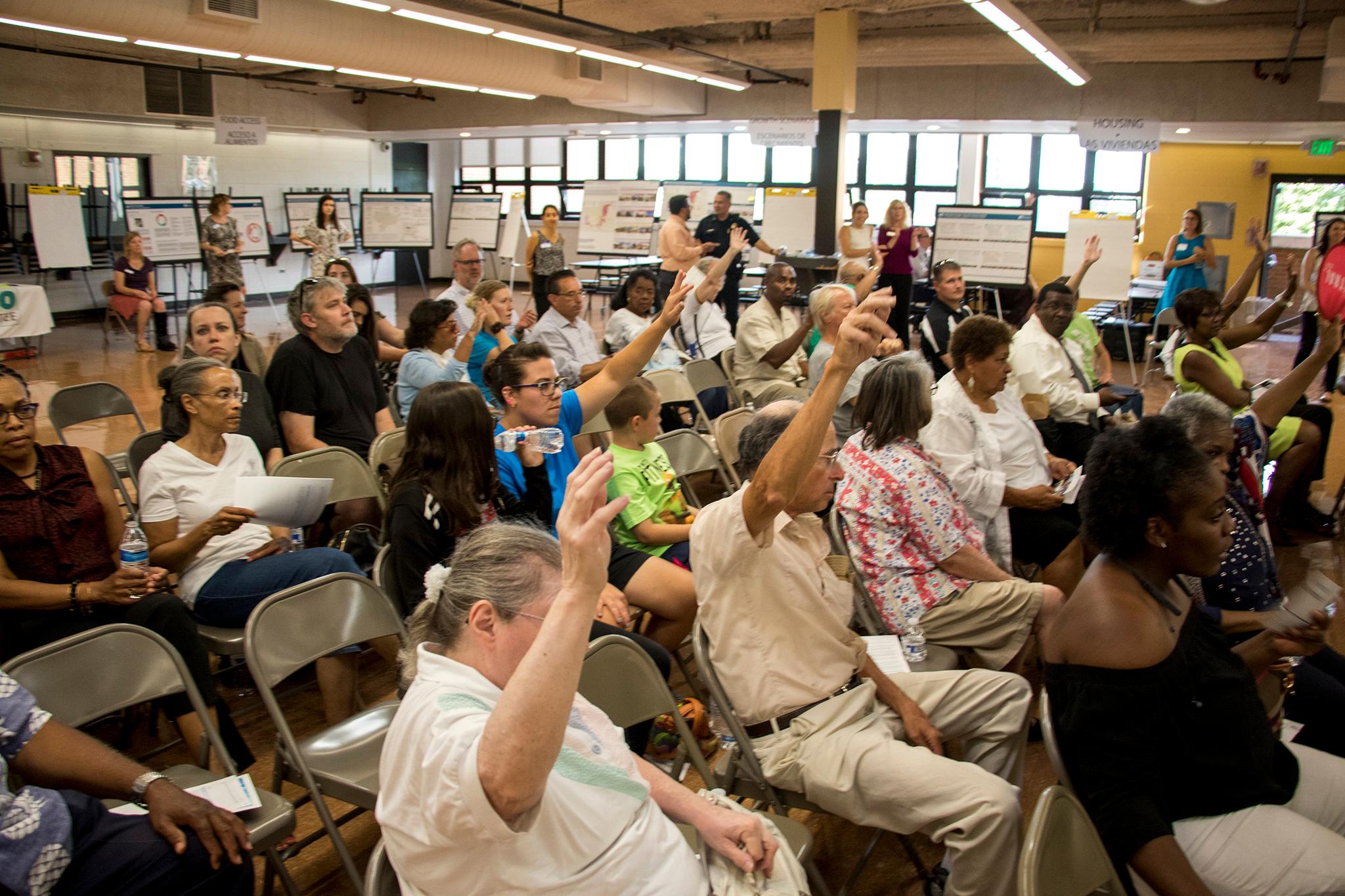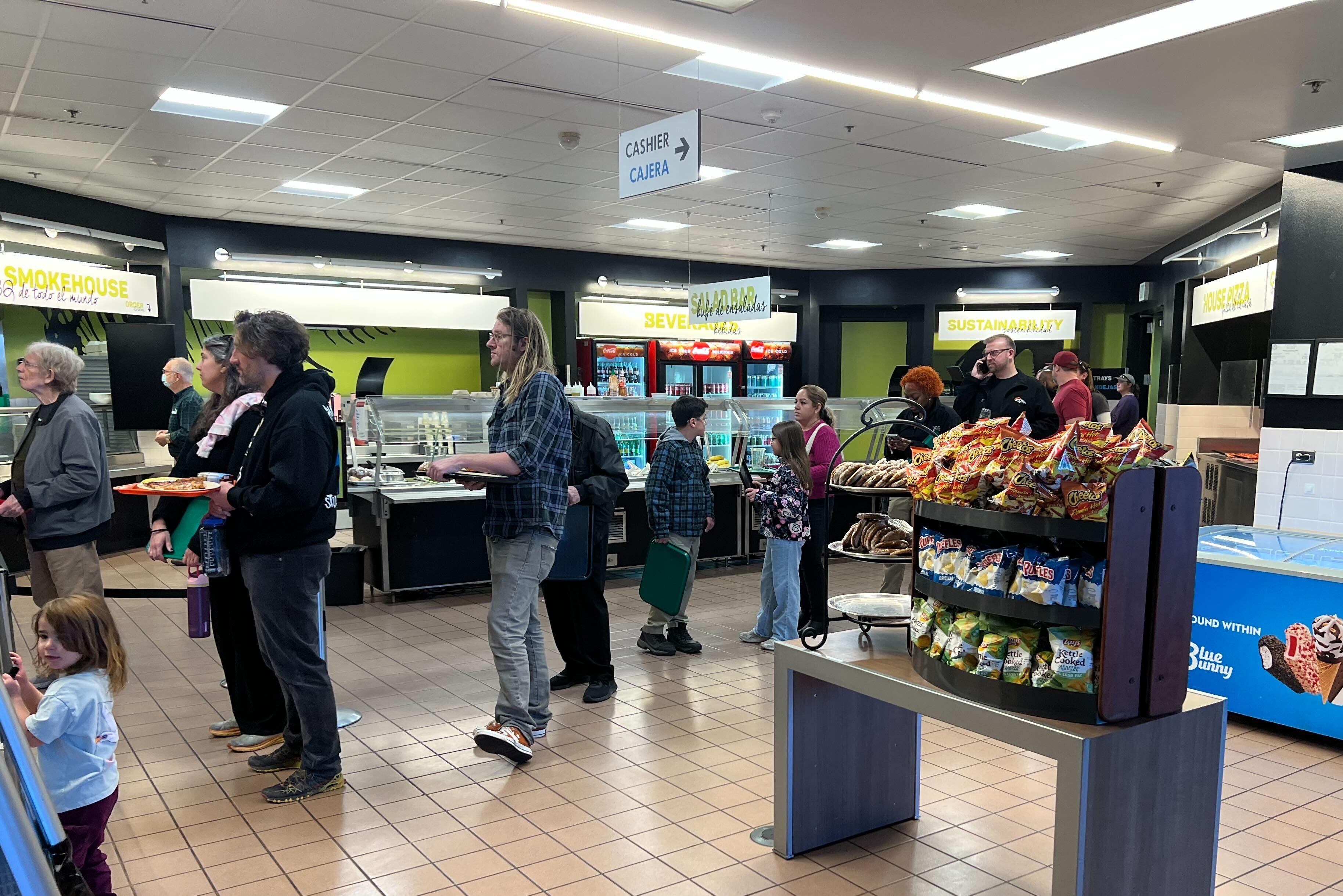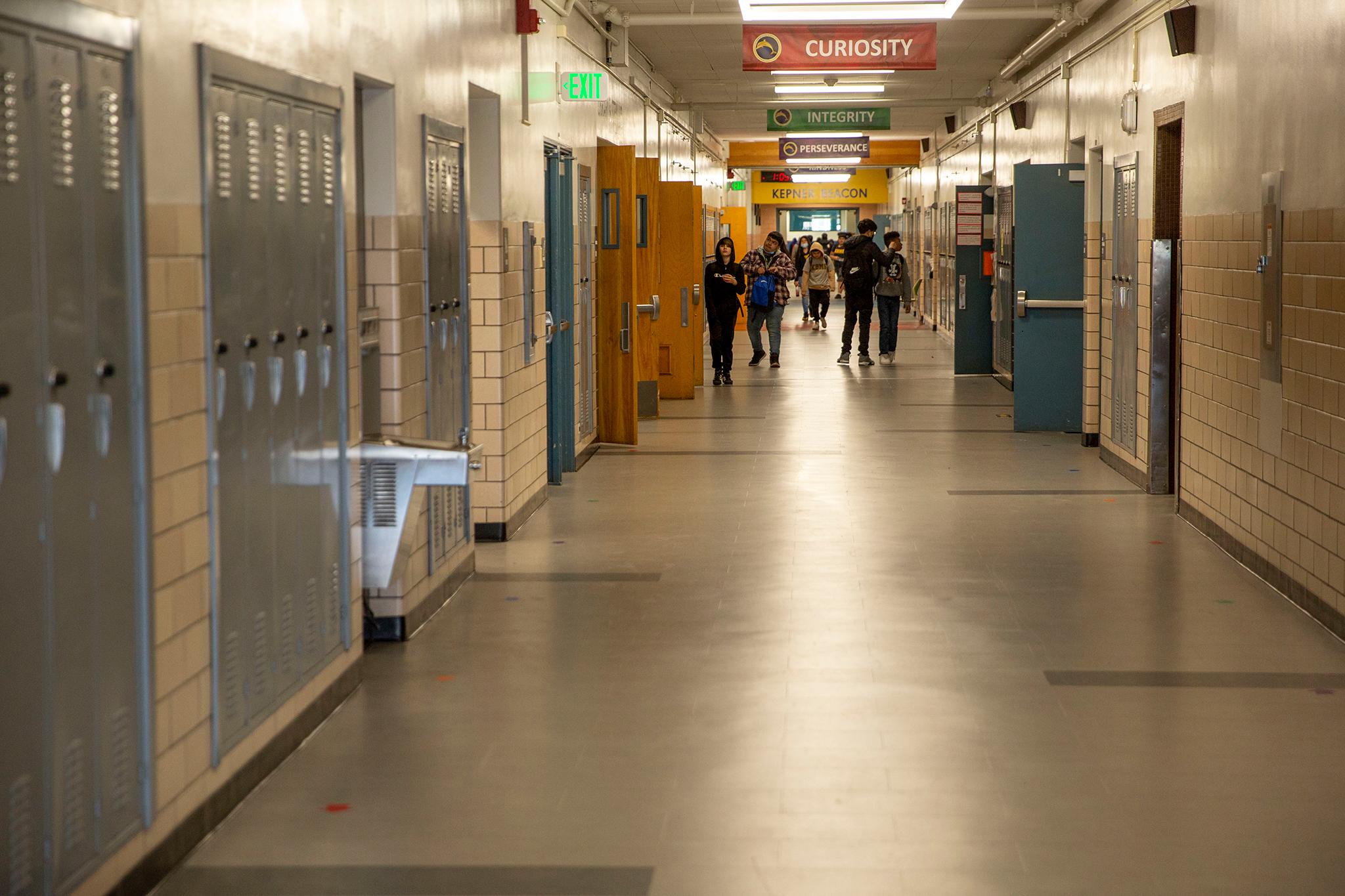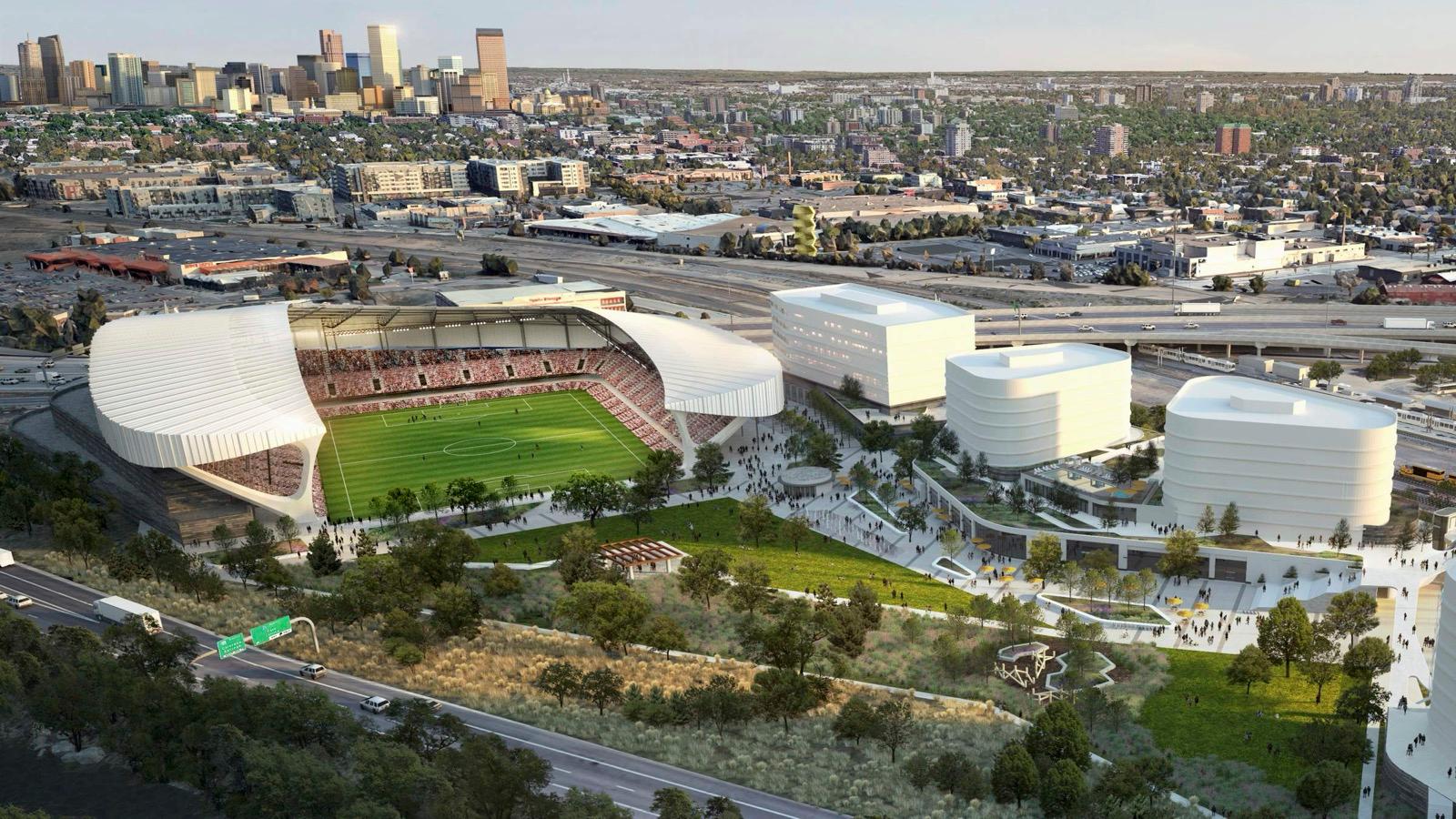The Far Northeast Area Plan is well underway, and last week, residents in the area gathered for public meeting No. 4 out of five to discuss their progress and refine some of the new propositions.
The area plan treatment is a new model of implementing neighborhood designs that will work in conjunction with Blueprint Denver and Denveright to help Denver adapt to its new, quickly changing circumstances. The far northeast is the first area to take on this process, but according to principal city planner Courtland Hyser, over the next 12 years, this process will take place in every part of the city.

The plans are specific to the respective areas, so let’s take a look at what some of the high priority issues for the far northeast.
Residents are tired of the dearth of food options.
The far northeast is a food desert, vastly underserved regarding access to high-quality fresh food. As residents have pointed out over the previous three meetings, fresh food is difficult to access but there is a plethora of fast food options and liquor stores. For many, the closest thing they have to a full-service grocery store is a local Save-A-Lot, which doesn’t have an adequate amount of options for neighborhoods that are growing and already have more than 40,000 residents.
One of the proposed fixes is to implement the FreshLo solution, which would involve putting in a new grocery store attached to a cultural hub in a building that also has affordable housing. Donna Garnett, executive director of the Montebello Organizing Committee, says she has been working with local farms throughout the far northeast region and those farms will be able to supply a substantial amount of food that goes into the market.
District 11 Councilwoman Stacie Gilmore was also present at the meeting and thinks information-gathering tactics will give the city council the tools they need to implement change.
“Through this process, we are assessing what the top priorities are, what the top concerns are,” she said, adding that with this data, they could work on rezoning that aligns with the area plan and consider things like limiting the number of drive-throughs that exist in an area. She also noted that plans like this provide the structure to help recruit potential businesses, like a grocery store.

The area is also lacking in effective, safe transportation infrastructure.
Beyond simply having grocery stores, many residents were concerned about their ability to get there. The far northeast has a reputation for inconsistent public transportation in conjunction with non-functional and unsafe residential streets.
Associate city planner Eugene Howard displayed several slides during his report about transportation that highlighted how the data the planning team had collected supported the need for significant infrastructure improvement in the area. There is an apparent lack of accessible transit in the area, and many residents without a car feel trapped in a neighborhood with a shortage of amenities.
One proposed solution is the addition of a speed and reliability transit corridor that connects all of the communities that make up the far northeast region, like Green Valley Ranch and Montbello. They have even considered using a dedicated lane for that bus to increase its speed and effectiveness.
The area plan also proposes many changes and enhancements to the far northeast’s current trail and bike path connections. They hope that these improvements not only help people move through the area without using a car but also foster the opportunity for people to utilize cross-regional transportation like the A-Line, for example, which can take residents into downtown Denver.
Possibly the most essential transportation change suggested in this phase of the plan is to make the streets safer. Howard noted that the rise of many neighborhoods in the far northeast coincided with the rise of the automobile in the '50s. This led to an environment where many residential streets have additional lanes that lead people to drive at unreasonable speeds and may be a significant cause of accidents with other vehicles and pedestrians. In many cases, the new map suggests taking out a lane of car traffic and using that area for something more in line with the requests in the rest of the plan. Suggested uses of the space include adding a bike lane, enhancing stormwater management capabilities or beautifying the area with additional tree coverage.
Another safety concern is the lack of adequate sidewalks in the area. Many of the sidewalks are broken or incomplete, and that lack of usability is a significant hazard for seniors, children and people with disabilities.
Those are changes far northeast residents Djuana Harvell, Anne White and Rose Thomas cannot wait to see take place. The trio emphasized that they desperately need improvements in all areas addressed in the plan, but would like these improved amenities to enhance their neighborhood without fundamentally changing it.
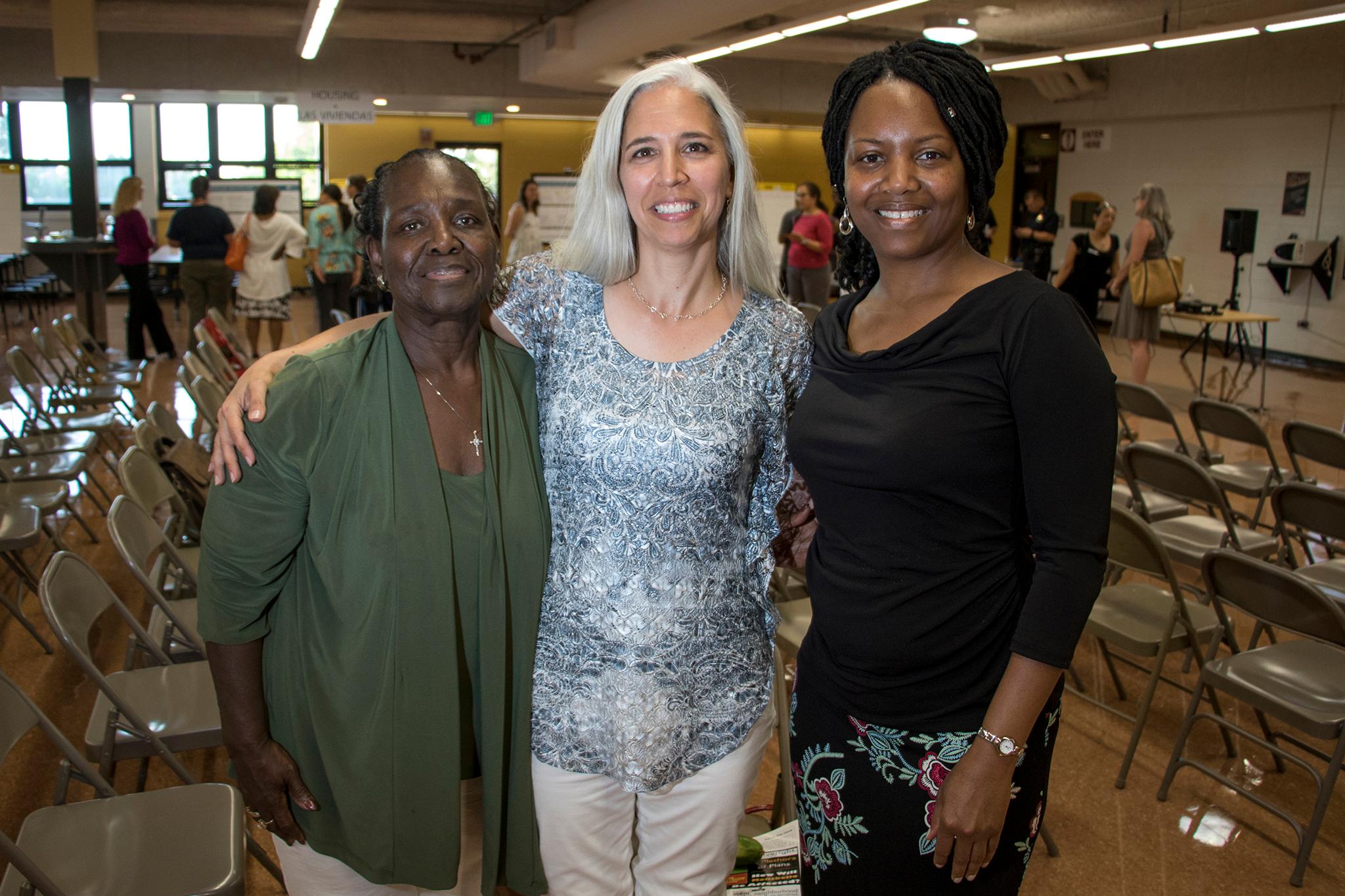
More development is coming — and a lot of it.
For some time now, Denver’s rising housing costs have been creeping into neighborhoods in the far northeast, and residents are concerned that the rising cost of living is going to substantially impact the character of their neighborhood and displace residents who won’t be able to afford price hikes. Hyser, however, assured residents that the new plan would not affect the current makeup of the area and said the city is actively working to avoid any types of displacement that would concur with development.
In fact, the next five years Hyser says the far northeast plans on adding 200 affordable units, preserving affordability for 2,000 households, and stabilizing residents in 1,000 households. To do this, they will concentrate most of the growth efforts into the more undeveloped parts of the far northeast, which will alleviate the competition for space seen in so many neighborhoods in central Denver.
All in all the plan calls for the addition of over 11,000 housing units to the area, over 13 million square feet of commercial space, more than 8,000 jobs and over a million square feet of office space. Howard noted that for many of these changes to make sense, increased density would be necessary.
Not everyone was gung-ho about the impending changes.
“It’s just missing more stuff that’s concrete. When is a grocery store going to open? What are they going to do about ‘fat corner’” said Nicole Howard, a long time FNE resident, referring to the intersection of Green Valley Ranch Boulevard and Tower Road and its an abundance of fast food dining options.
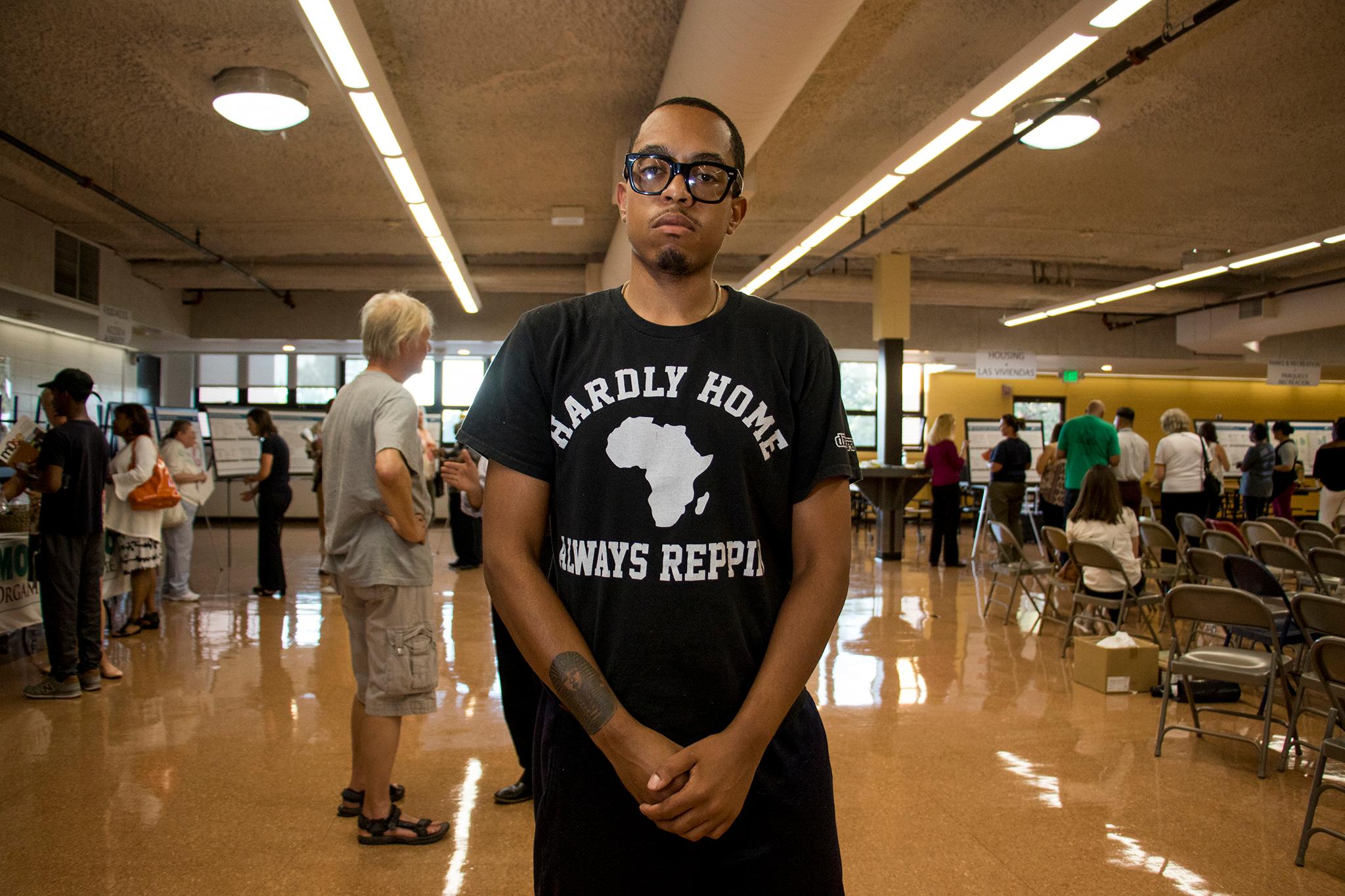
Michael Emerson, who lives in the area and attended the recent public meeting, got emotional when he pondered what these changes could mean for his neighborhood going forward. He fears that his neighborhood will encounter the same problems as Five Points and Whittier, which have been fundamentally changed over the last several years.
“They're going to do whatever they want, it’s just getting gentrified,” he said. “It’s surreal, bro. They want to get rid of people like me and bring new people in. They didn’t show any love.”

